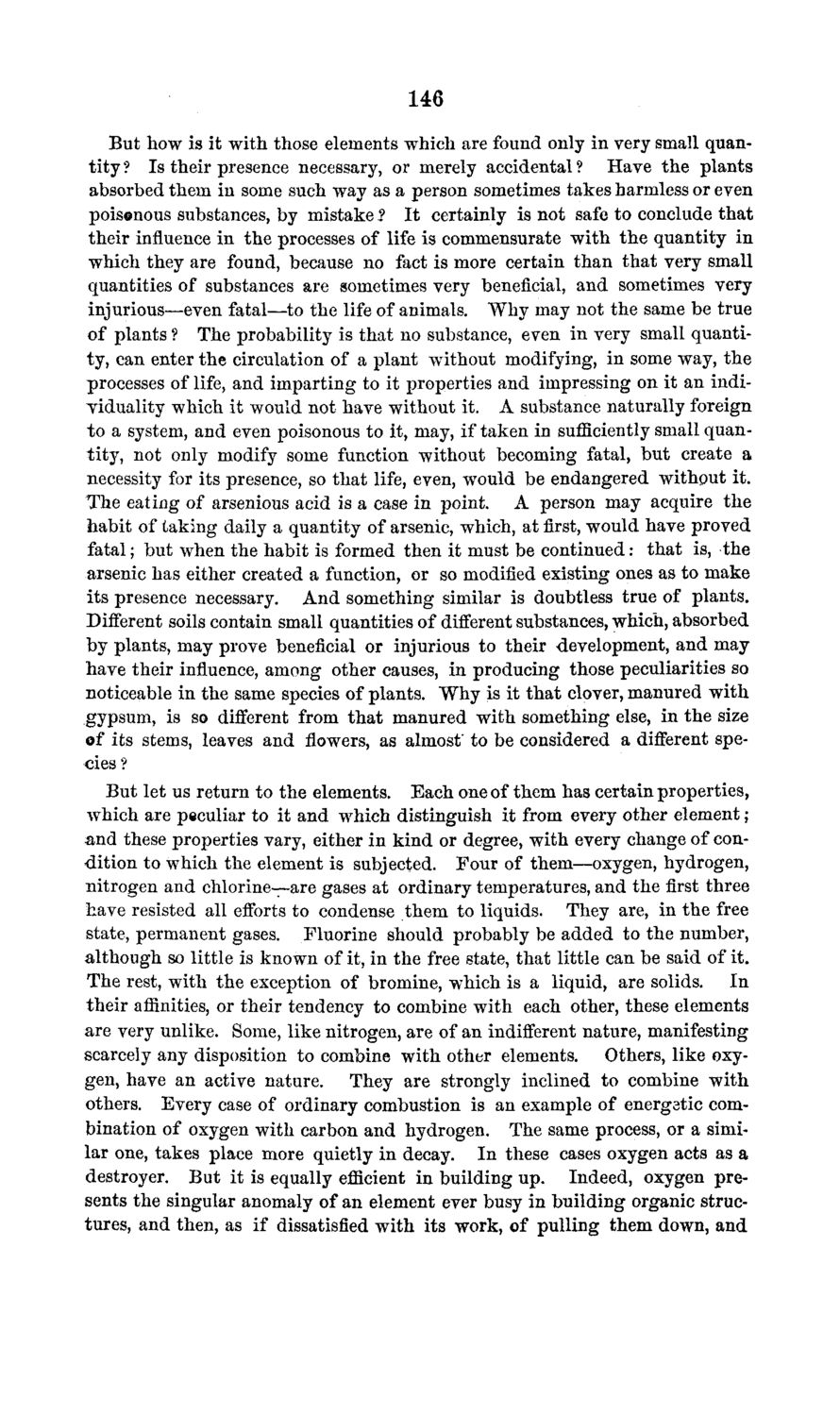| |
| |
Caption: Board of Trustees Minutes - 1869
This is a reduced-resolution page image for fast online browsing.

EXTRACTED TEXT FROM PAGE:
146 But how is it with those elements which are found only in very small quantity ? Is their presence necessary, or merely accidental ? Have the plants absorbed them in some such way as a person sometimes takes harmless or even poisonous substances, by mistake 2 It certainly is not safe to conclude that their influence in the processes of life is commensurate with the quantity in which they are found, because no fact is more certain than that very small quantities of substances are sometimes very beneficial, and sometimes very injurious—even fatal—to the life of animals. Why may not the same be true of plants ? The probability is that no substance, even in very small quantity, can enter the circulation of a plant without modifying, in some way, the processes of life, and imparting to it properties and impressing on it an individuality which it would not have without it. A substance naturally foreign to a system, and even poisonous to it, may, if taken in sufficiently small quantity, not only modify some function without becoming fatal, but create a necessity for its presence, so that life, even, wTould be endangered without it. The eating of arsenious acid is a case in point. A person may acquire the habit of taking daily a quantity of arsenic, which, at first, would have proved fatal; but when the habit is formed then it must be continued: that is, the arsenic has either created a function, or so modified existing ones as to make its presence necessary. And something similar is doubtless true of plants. Different soils contain small quantities of different substances, which, absorbed by plants, may prove beneficial or injurious to their development, and may have their influence, among other causes, in producing those peculiarities so noticeable in the same species of plants. Why is it that clover, manured with gypsum, is so different from that manured with something else, in the size of its stems, leaves and flowers, as almost to be considered a different speoies? But let us return to the elements. Each one of them has certain properties, which are peculiar to it and wThich distinguish it from every other element; and these properties vary, either in kind or degree, with every change of condition to which the element is subjected. Four of them—oxygen, hydrogen, nitrogen and chlorine—are gases at ordinary temperatures, and the first three have resisted all efforts to condense them to liquids. They are, in the free state, permanent gases. Fluorine should probably be added to the number, although so little is known of it, in the free state, that little can be said of it. The rest, with the exception of bromine, which is a liquid, are solids. In their affinities, or their tendency to combine with each other, these elements are very unlike. Some, like nitrogen, are of an indifferent nature, manifesting scarcely any disposition to combine with other elements. Others, like oxygen, have an active nature. They are strongly inclined to combine with others. Every case of ordinary combustion is an example of energetic combination of oxygen with carbon and hydrogen. The same process, or a similar one, takes place more quietly in decay. In these cases oxygen acts as a destroyer. But it is equally efficient in building up. Indeed, oxygen presents the singular anomaly of an element ever busy in building organic structures, and then, as if dissatisfied with its work, of pulling them down, and
| |